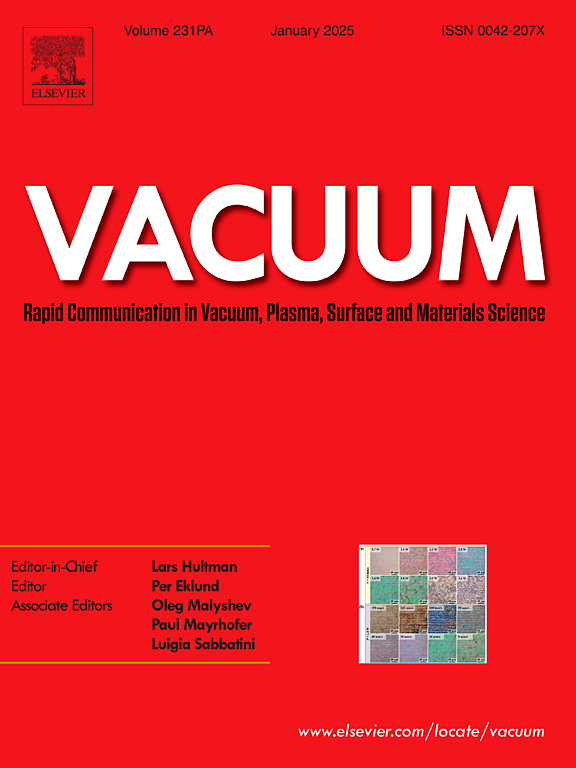Precipitation behavior of the secondary L12-Al3(Sc, Zr) phase in the SLM fabricated Al-4Cu-2Mg-0.3Sc-0.7Zr alloy during aging process
IF 3.8
2区 材料科学
Q2 MATERIALS SCIENCE, MULTIDISCIPLINARY
引用次数: 0
Abstract
The precipitation behavior of the secondary L12-Al3(Sc, Zr) precipitates in the selective laser melting (SLM) fabricated Al-4Cu-2Mg-0.3Sc-0.7Zr alloy is investigated. And the distribution of Sc and Zr atoms in the secondary Al3(Sc, Zr) precipitates at different aging temperatures was studied by HAADF-STEM. The secondary L12-Al3(Sc, Zr) precipitates are predominantly comprise Al and Sc atoms after direct aging at 225 °C for 2.5 h, and this indicating that Sc elements primarily control the nucleation and the growth of the L12-Al3(Sc, Zr) phase at 225 °C. The distinct Al3Sc-rich core and Al3Zr-rich shell structure were observed when the aging temperature increases to 440 °C, and both Sc atoms and Zr atoms actively participate in the nucleation and growth of Al3(Sc, Zr) particles at 440 °C. Furthermore, Cu element enriched at the interface between Al3(Sc, Zr) precipitate and Al matrix following direct aging treatment at 440 °C for 0.5 h. And during non-isothermal aging process, the oxidation was observed occurs at the grain boundary mainly when the aging temperatures were higher than 440 °C.

时效过程中Al-4Cu-2Mg-0.3Sc-0.7Zr合金中次生L12-Al3(Sc, Zr)相的析出行为
研究了选择性激光熔化(SLM)制备的Al-4Cu-2Mg-0.3Sc-0.7Zr合金中L12-Al3(Sc, Zr)次生相的析出行为。利用HAADF-STEM研究了不同时效温度下次生Al3(Sc, Zr)析出物中Sc和Zr原子的分布。225℃直接时效2.5 h后,次生析出的L12-Al3(Sc, Zr)相主要由Al和Sc原子组成,表明在225℃时Sc元素主要控制L12-Al3(Sc, Zr)相的形核和长大。当时效温度升高到440℃时,观察到明显的富al3sc核和富al3zr壳结构,440℃时Sc原子和Zr原子都积极参与Al3(Sc, Zr)粒子的形核和生长。在440℃直接时效0.5 h后,Cu元素富集于Al3(Sc, Zr)析出物与Al基体的界面处。在非等温时效过程中,时效温度高于440℃时晶界处主要发生氧化。
本文章由计算机程序翻译,如有差异,请以英文原文为准。
求助全文
约1分钟内获得全文
求助全文
来源期刊

Vacuum
工程技术-材料科学:综合
CiteScore
6.80
自引率
17.50%
发文量
0
审稿时长
34 days
期刊介绍:
Vacuum is an international rapid publications journal with a focus on short communication. All papers are peer-reviewed, with the review process for short communication geared towards very fast turnaround times. The journal also published full research papers, thematic issues and selected papers from leading conferences.
A report in Vacuum should represent a major advance in an area that involves a controlled environment at pressures of one atmosphere or below.
The scope of the journal includes:
1. Vacuum; original developments in vacuum pumping and instrumentation, vacuum measurement, vacuum gas dynamics, gas-surface interactions, surface treatment for UHV applications and low outgassing, vacuum melting, sintering, and vacuum metrology. Technology and solutions for large-scale facilities (e.g., particle accelerators and fusion devices). New instrumentation ( e.g., detectors and electron microscopes).
2. Plasma science; advances in PVD, CVD, plasma-assisted CVD, ion sources, deposition processes and analysis.
3. Surface science; surface engineering, surface chemistry, surface analysis, crystal growth, ion-surface interactions and etching, nanometer-scale processing, surface modification.
4. Materials science; novel functional or structural materials. Metals, ceramics, and polymers. Experiments, simulations, and modelling for understanding structure-property relationships. Thin films and coatings. Nanostructures and ion implantation.
 求助内容:
求助内容: 应助结果提醒方式:
应助结果提醒方式:


